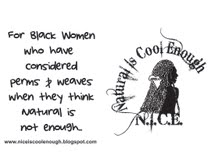http://www.jblearning.com/catalog/9780763761646/
CASE STUDY
An African American woman enters a healthcare facility where she is to receive a magnetic resonance image (MRI) of her spine. She has long hair in the style knownas locks. She is greeted by the receptionists and asked to have a seat in the waitingarea until the technician is ready to see her. A White, male technician arrives to escort the woman in for the procedure and briefly discuss the process of the MRI with her. During his overview, he indicates to her that she will have to remove anymetal objects (such as pins in her hair and jewelry) and that she should remove her hair for the process. The woman is appalled by his latter statement and indicates to him that her hair is her own and cannot be removed. He responds by stating that he has served a number of Black women who have weaves and other “false”hair often held in by pins, so he was basically taking a precaution. The woman is highly insulted and asks to speak to the administrator on duty. A White woman, in an elegantly tapered suit, arrives, hears the concern, and explains to the African American woman that the technician meant no harm but it is the policy of thefacility to be thorough with all patients in terms of the provision of information and that he was correct in inquiring about her hair in the manner that he did to ensure safety during the MRI process. She offers no apology and curtly responds,“I hope this resolves your concerns as he was merely following our required protocol.”The African American woman responds with a disappointed and curt thank you and leaves the building promptly vowing never to return. She seeks her MRI at another facility.















1 comment:
The case study has me thinking what would I have done in the situation. I know that I don't get offended easily so it is always hard for me to understand why some people do. I would have felt honored that the young man thought I was wearing a wig/weave. I can see the stereotype in the statement but I am sure that I have let others know my views on things that could have been construde as being stereotypical.
Post a Comment